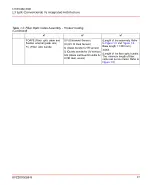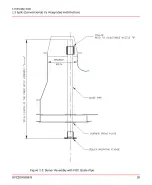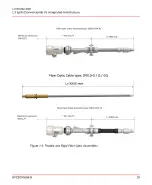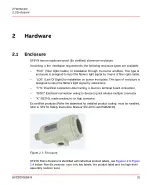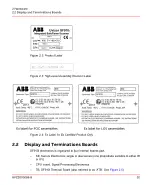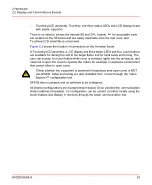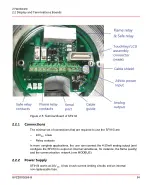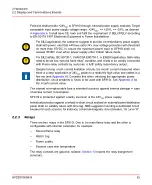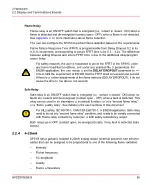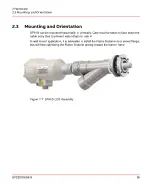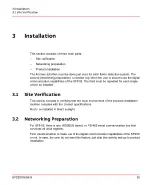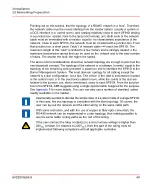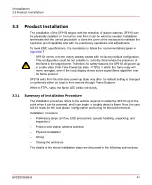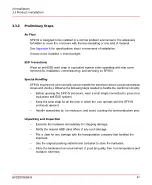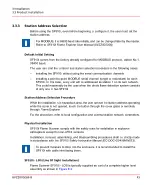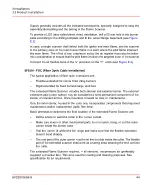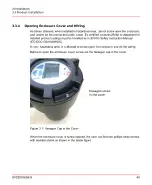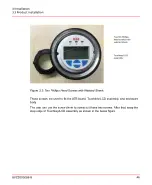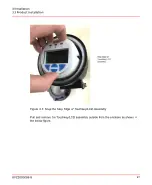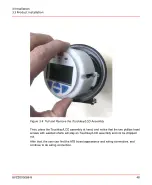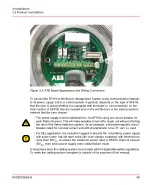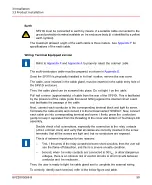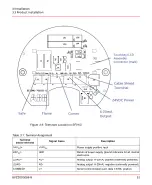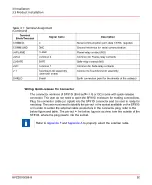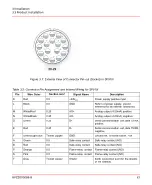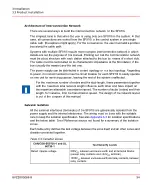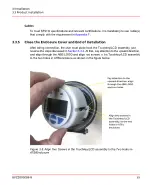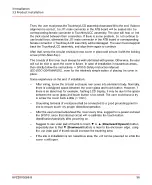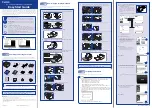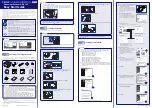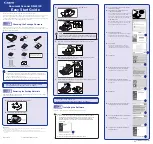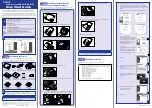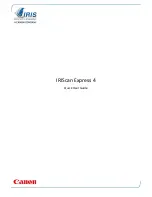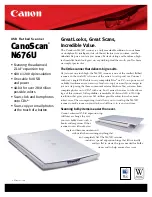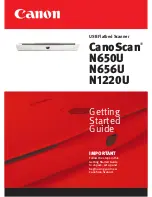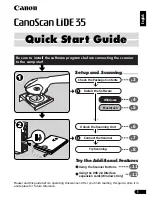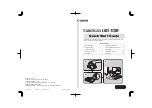
3.3
Product Installation
The installation of the SF910i begins with the selection of station address. SF910i can
be physically installed on the burner, and then it can be wired as needed. Installation
terminates with the correct procedure to close the cover of the enclosure to maintain the
explosion proof capability and with the preliminary operations and adjustments.
To meet EMC specifications, it is mandatory to follow the recommendations given in
.
SF910i comes from the factory already loaded with the factory-default configuration.
This configuration could be not suitable to correctly discriminate the presence of
the flame in the target burner. Therefore, for safety reasons, the SF910i will power-up
in a safe state (First-Time Power-Up state - FTPU) in which the flame relay will
never energize, even if the local display shows active signal flame algorithm vote
for flame present.
SF910i exits from this first-time power-up state only after the default setting is changed
or confirmed either on local or from remote through Flame Explorer.
While in FTPU state, the flame LED blinks red slowly.
3.3.1
Summary of Installation Procedure
The installation procedure refers to the actions required to install the SF910i up to the
point when it can be powered, and it can begin to roughly detect a flame. Now, the user
will be ready for the next phase (configuration and tuning for best performance).
Installation procedure:
–
Preliminary steps (air flow, ESD precautions, special handling, unpacking, and
inspection)
–
Protocol and station address selection
–
Physical installation
–
Wiring
–
Closing the enclosure
The details of the above installation steps are discussed in the following sub-sections.
8VZZ005286 B
41
3 Installation
3.3 Product Installation
Summary of Contents for Uvisor SF910i
Page 2: ......
Page 6: ......
Page 20: ...8VZZ005286 B 20...
Page 30: ...8VZZ005286 B 30...
Page 68: ...8VZZ005286 B 68...
Page 78: ...8VZZ005286 B 78...
Page 90: ...8VZZ005286 B 90...
Page 92: ...8VZZ005286 B 92...
Page 98: ...8VZZ005286 B 98...
Page 108: ...8VZZ005286 B 108...
Page 114: ...8VZZ005286 B 114...
Page 118: ...8VZZ005286 B 118...
Page 126: ...8VZZ005286 B 126...
Page 128: ...8VZZ005286 B 128...
Page 130: ...8VZZ005286 B 130...
Page 150: ...8VZZ005286 B 150...
Page 151: ...Appendix E Drawings 8VZZ005286 B 151 E Drawings...
Page 152: ...Figure E 1 Enclosure Quick Release Connector and Version LOS 8VZZ005286 B 152 E Drawings...
Page 153: ...Figure E 2 Enclosure NPT Cable Inlet and Version LOS 8VZZ005286 B 153 E Drawings...
Page 154: ...Figure E 3 Enclosure Quick Release Connector and Version FOC 8VZZ005286 B 154 E Drawings...
Page 155: ...Figure E 4 Enclosure NPT Cable Inlet and Version FOC 8VZZ005286 B 155 E Drawings...
Page 156: ...Figure E 5 FOC Flexible Assembly 8VZZ005286 B 156 E Drawings...
Page 157: ...Figure E 6 FOC Rigid Assembly 8VZZ005286 B 157 E Drawings...
Page 160: ...Figure E 9 Bailey Flame ON Standard Replacement 8VZZ005286 B 160 E Drawings...
Page 161: ...Figure E 10 Typical Bailey Flame ON Installation 8VZZ005286 B 161 E Drawings...
Page 162: ...8VZZ005286 B 162...
Page 170: ...8VZZ005286 B 170...
Page 178: ...G 7 Counter Flange 8VZZ005286 B 178 G Fittings G 7 Counter Flange...
Page 189: ......

